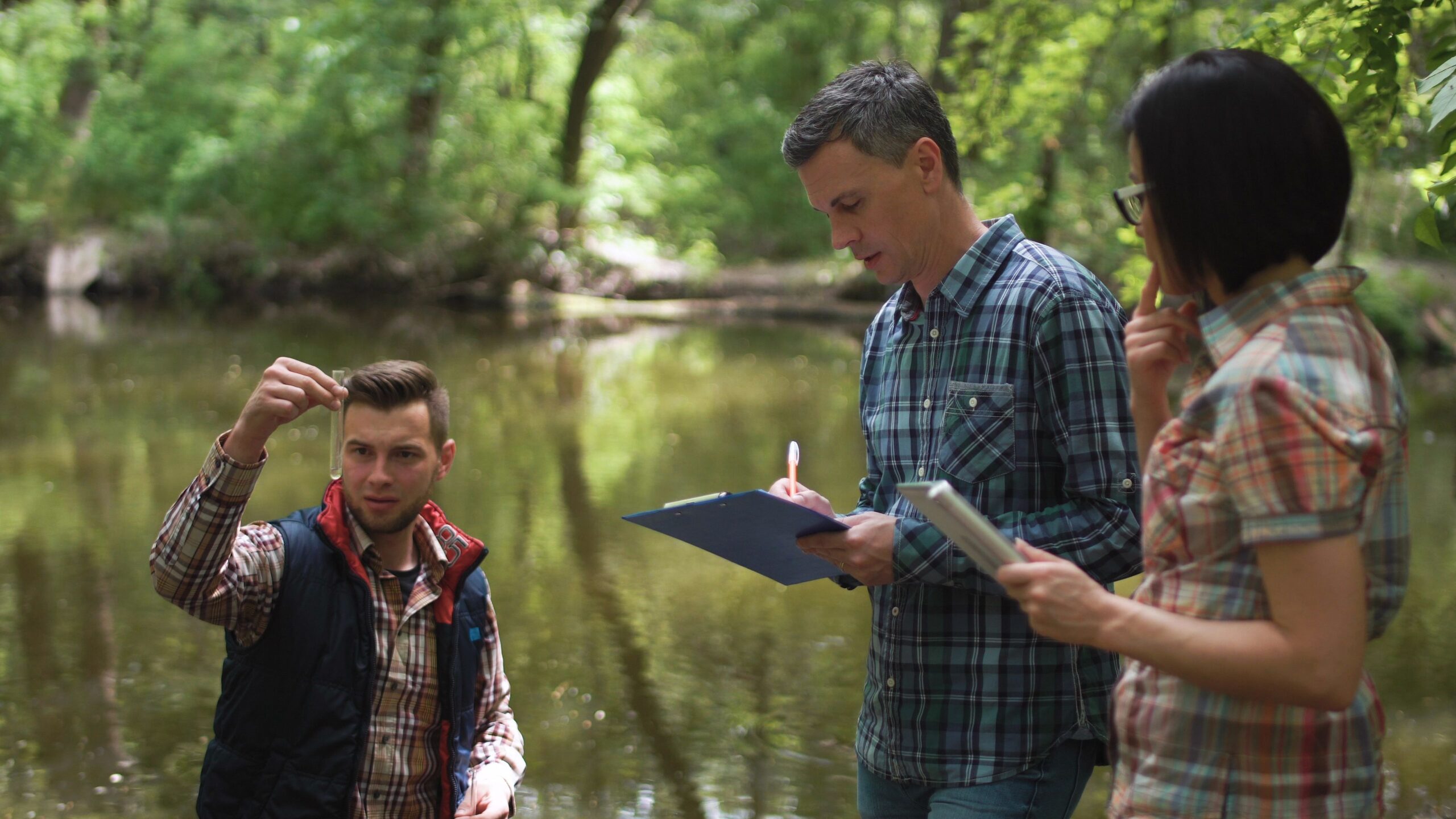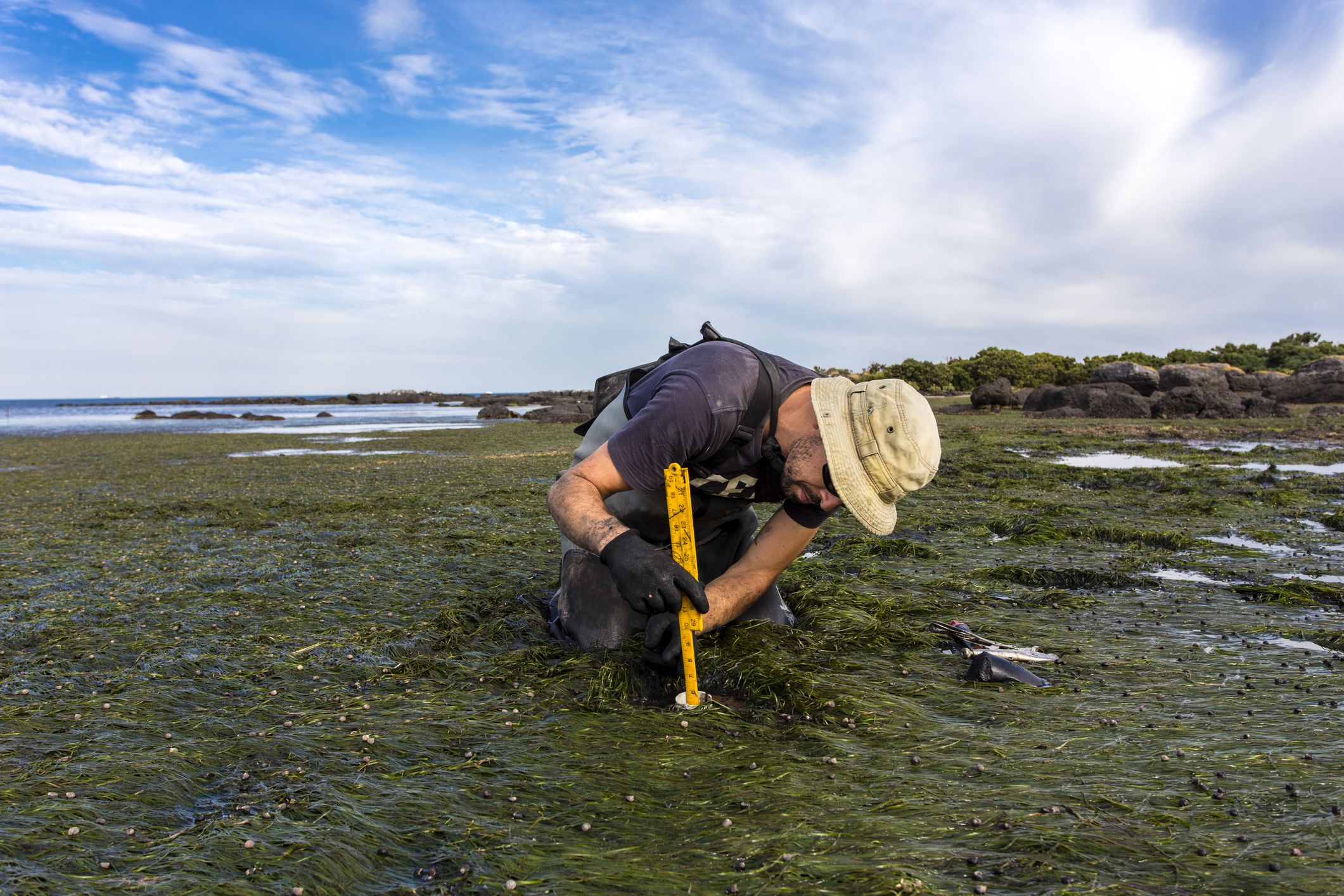People leading the charge against climate change and pollution are in demand. Since 2019, hiring for green jobs hasoutpaced the overall hiring rate in the United States and globally — a trend that continued through the pandemic, showing that the need for sustainability professionals is resilient to economic downturn and calamitous events. GreenBiz reports that sustainability workers are not only highly desirable, but that there aren’t enough to go around. Whether you’re looking for a career change or a next gig, here are the-top paying green jobs from least to most well-paying according to the Bureau of Labor Statistics.
Related: Which States Could See Big Impacts From a Biden Environmental Plan
Hazardous Materials Removal Worker

Median Pay: $42,270
Entry-Level Education: High School diploma or equivalent
These workers remove asbestos, lead, and radioactive materials. It’s a tough job, particularly because they may also be called into emergency or disaster zones. Alaska employs a high concentration of these works and pays them well for it with an average salary around $20,000 above the median.
Related: Jobs That Could Grow During the Pandemic and Recession
Solar Photovoltaic Installers

Median Pay: $46,470
Entry-Level Education: High school diploma or equivalent
These technicians assemble, set up, and maintain residential and commercial solar systems. The field is booming. The field is expected to grow 52% by 2030 compared with an average rate of 8%. It’s no surprise that sunny states such as Hawaii, California, Arizona, and Utah are hiring more of these workers. Texas is still tops when it comes to pay in this field, though.
Environmental Science and Protection Technician

Median Pay: $46,850
Entry-Level Education: Associate degree
This field, which involves investigating sources of pollution and contamination to protect public health, is expanding. Employment in this field is expected to grow at 11% through 2030 — faster than average. California, Florida, Texas, New York, and Pennsylvania employ the most technicians, but Alabama pays them best: Cotton State technicians earn, on average, $68,480.Wind Turbine Technician

Median Pay: $56,230
Entry-Level Education: Postsecondary
Employment for wind turbine technicians is far outpacing other occupations: It’s projected to grow 68% by 2030, compared with just 8% in many other fields. These technicians build, maintain, and repair the wind turbines that dot the western United States. Technicians attend technical school to learn their trade and get plenty of on-the-job training. The field often requires working in confined spaces or at great heights. Technicians are in high demand in North Dakota, South Dakota, Kansas, Oklahoma, and Texas, which all employ lots of these workers.Conservation Scientists

Median Pay: $64,020
Entry-Level Education: Bachelor’s degree
Working hand in hand with governments and private land owners, conservation scientists balance land use with environmental costs. Texas, Colorado, California, Pennsylvania, and Washington employ the most conservation scientists. Minnesota gives its conservation scientists $25,000 above the median, though.Trending on Cheapism
Environmental Scientist

Median Pay: $73,230
Entry-Level Education: Bachelor’s degree
Whether working in the office or field, environmental scientists use their knowledge of the natural world to conduct experiments and inform policy. They can land jobs with government agencies, consulting firms, or other private companies. Alaska, New Mexico, District of Columbia, Wyoming, and Vermont have the highest concentrations of environmental scientists. The District of Columbia tends to pay their environmental scientists more; the average wage there is nearly $124,000.
Environmental Chemist

Median Pay: $73,230
Entry-Level Education: Bachelor’s degree
Want to know the long-term risks of soil or groundwater contaminants? That’s the role of an environmental chemist, who can also develop corrective strategies for those contaminants and manage hazardous waste disposal. Delaware, New Jersey, Massachusetts, Maryland, and North Carolina have the highest concentrations of job in the field, bur the District of Columbia is tops when it comes to salaries for chemists.Urban Planner

Median Pay: $75,950
Entry-Level Education: Master’s degree
In areas experiencing population booms, urban planners are essential for developing sustainable spaces and methods of transportation. The field is growing at a rate on par with others, though Delaware, Hawaii, Alaska, Washington, and Vermont call upon more than their fair share of these workers. The District of Columbia pays them best, with an average salary of more than $107,000.Sign up for our newsletter
Hydrologist

Median Pay: $84,040
Entry-Level Education: Bachelor’s degree
Whether for private companies or government agencies, hydrologists study the availability and quality of water. You might find them wading into bodies of water to collect samples or sitting behind a desk running models. Hydrologists are particularly in demand in the western states including Montana, Idaho, Alaska, Colorado, and Nevada. Hydrologists looking for more money should look at New Jersey; it pays around $40,000 above the median.LEED-Accredited Design Professional

Median Pay: $86,000
Entry-Level Education: Bachelor’s degree
These architects complete additional training and pass an exam to become certified for Leadership in Energy and Environmental Design, the premier standard for sustainable buildings. That way they can plan and design green residences and commercial properties. The District of Columbia, Colorado, Washington, Montana, and New York employ a high concentration of architects.Environmental Engineer

Median Pay: $92,120
Entry-Level Education: Bachelor’s degree
This field is growing slower than the average, but this is a go-to position when companies need to solve environmental problems. They work with other engineers, planners, and people within the design and construction industries to solve biological or chemical issues. Texas employs a fair number of these positions and pays them well at $122,000 a year. Alaska, West Virginia, Colorado, Montana, and Wyoming also have high concentrations of jobs in this field.Geoscientist

Median Pay: $93,580
Entry-Level Education: Bachelor’s degree
Geoscience fieldwork can find natural resources; preserve natural spaces; or even clean up and reclaim land from development or industrial use. The field’s growing at an average pace, but workers are especially in demand in Alaska, Wyoming, Colorado, Nevada, and Montana. Head to Texas if you want to make $50,000 above the average pay in this field.Biochemist and Biophysicist

Median Pay: $94,270
Entry-Level Education: Doctoral or professional degree
Biochemistry and biophysics have wide applicability to sustainability. Depending on their specialties, scientists in these concentrations may study cell growth and disease in humans, genetically engineer crops, or develop renewable fuels. These highly educated specialists will find plenty of work in Massachusetts — where they’ll also be paid above average — Delaware, New Jersey, Maine, and Minnesota.Chief Sustainability Officers

Median Pay: $107,680
Entry-Level Education: Bachelor’s degree
This field is a new addition to the corporate executive suite. Companies employ people in these roles to oversee their environmental policies and impact. The role is comparable with other executives, which are in demand everywhere. Alaska, Utah, Maine, the District of Oklahoma employ a lot of these professionals.Environmental Lawyer

Median Pay: $126,930
Entry-Level Education: Doctoral or professional degree
Environmental lawyers specialize in issues related to air, water, and soil quality, hazardous waste disposal, and other issues. They can find roles in government agencies, private law firms, and nonprofit organizations. Although data isn’t available for this specialty, the District of Columbia, New York, Florida, Delaware, and Rhode Island all employ a great number of lawyers.






